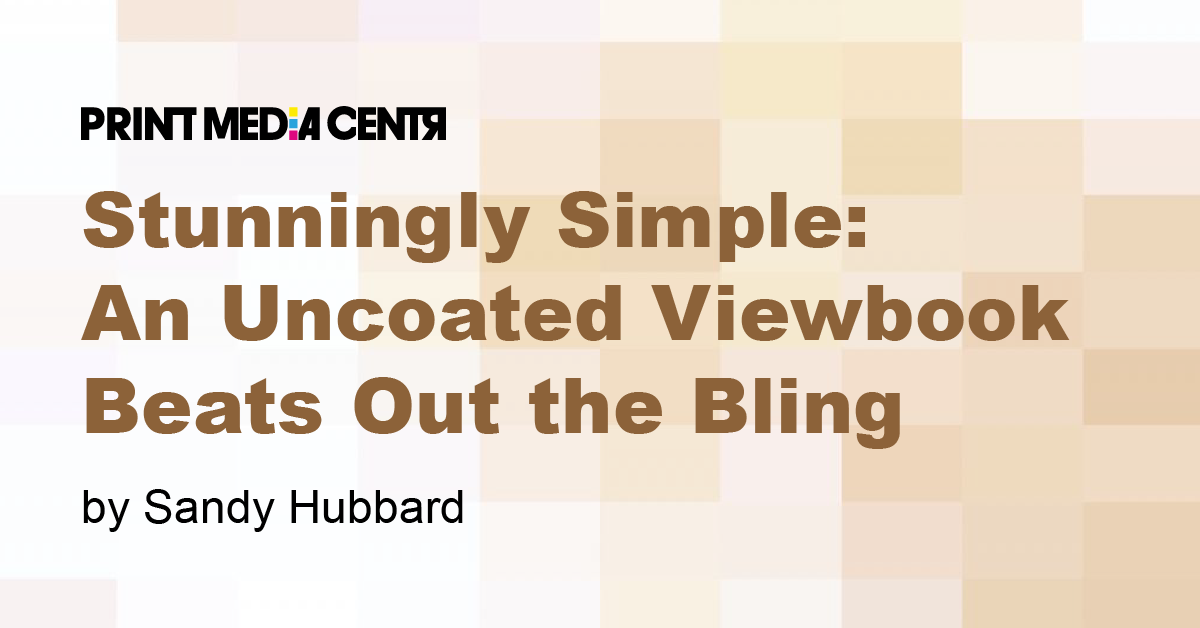
In the past, my client sent top prospects a glitzy book — a sales-oriented white paper. It was packaged in a royal purple turned-edge leather binder with a branded silver clasp.
Bling-a-bling-bling!
The white paper (created by a big-name agency) was crammed with features and benefits, had pie charts and QR codes, and the typical stock photos.
“Sandy, help us! Why isn’t our marketing piece working anymore?” asked my client.
My team set out to interview the buyers — who were brutally frank.
- They thought the white paper existed only to *push* the sale, not to benefit or educate the prospect.
- They saw it as something designed to show a “boss” to get the green light on the contract.
- They perceived it as unctuous and self-serving.
As we collected our data, we realized were talking to a different buyer than our client had prepared us for.
My client’s buyers were younger and more junior in the management scheme. This was a change from 5 years ago, when the agency had created the white paper for C-suite execs. These days, the buyer was a part of a decision-making team with a flat, collaborative hierarchy. And the new type of buyer preferred to ask for input from co-workers who did not relate to slick marketing appeals.
In every way, the bling-laden binder was a turn-off to this new style of buying team. The shiny published white paper came across as wasteful and materialistic.
And the purple binder? For this demographic, it was embarrassing.
With all that in mind, we set about creating a show-stopping marketing piece that would send the right message to today’s buyers.
Our plan:
- Less verbiage.
- Uncoated stock.
- A recycled feel with artistic quality.
- Photos of customers from around the world.
- A simple narrative focused on my client’s brand values, not the selling proposition.
Oh, and no bling.
We ended up with a gorgeous, oversized viewbook that truly turned heads.
We chose a stunning cover photo by a commissioned artist. There was no text on the cover. At all.
The cover stock was stiff enough so the piece could stand up without slumping. Why?
The viewbook was designed to lean against a wall — like a piece of art — not filed away in a desk drawer.
Buyers loved it.
With the new viewbook, my client’s brand perception skyrocketed. Members of the prospect’s team became aware of my client and what they do. Other people in the buying organization interacted with the viewbook, including the prospect’s gatekeeper (who never would have presumed to open a fancy binder, but felt free to flip through an “art book.”).
The new viewbook isn’t a book for convincing. It’s for setting a mood and piquing interest.
Often we think we should add bling to improve our sales arsenal. Instead, we need to step back, figure out what the piece can and should do, and visualize how the prospect will perceive it. Only then should we decide the best way to deliver that information.
When it comes to print marketing, a stunningly simple viewbook can convey as much elegance and persuasive ability as the shiniest bling-a-bling-bling.
Now that’s the power of print!
Do you have before-and-after case studies of a print redesign? Share in the comments below, and be sure to read more posts from Sandy here.
 Sandy Hubbard is a relentless advocate for the power of print. As a Marketing Strategist and Consultant, she helps printers develop a strong cross-channel marketing program that catches the attention of new customers. You can find Sandy Hubbard every Wednesday co-hosting #PrintChat on LinkedIn. Join the group here> https://www.linkedin.com/groups/12566297/
Sandy Hubbard is a relentless advocate for the power of print. As a Marketing Strategist and Consultant, she helps printers develop a strong cross-channel marketing program that catches the attention of new customers. You can find Sandy Hubbard every Wednesday co-hosting #PrintChat on LinkedIn. Join the group here> https://www.linkedin.com/groups/12566297/












